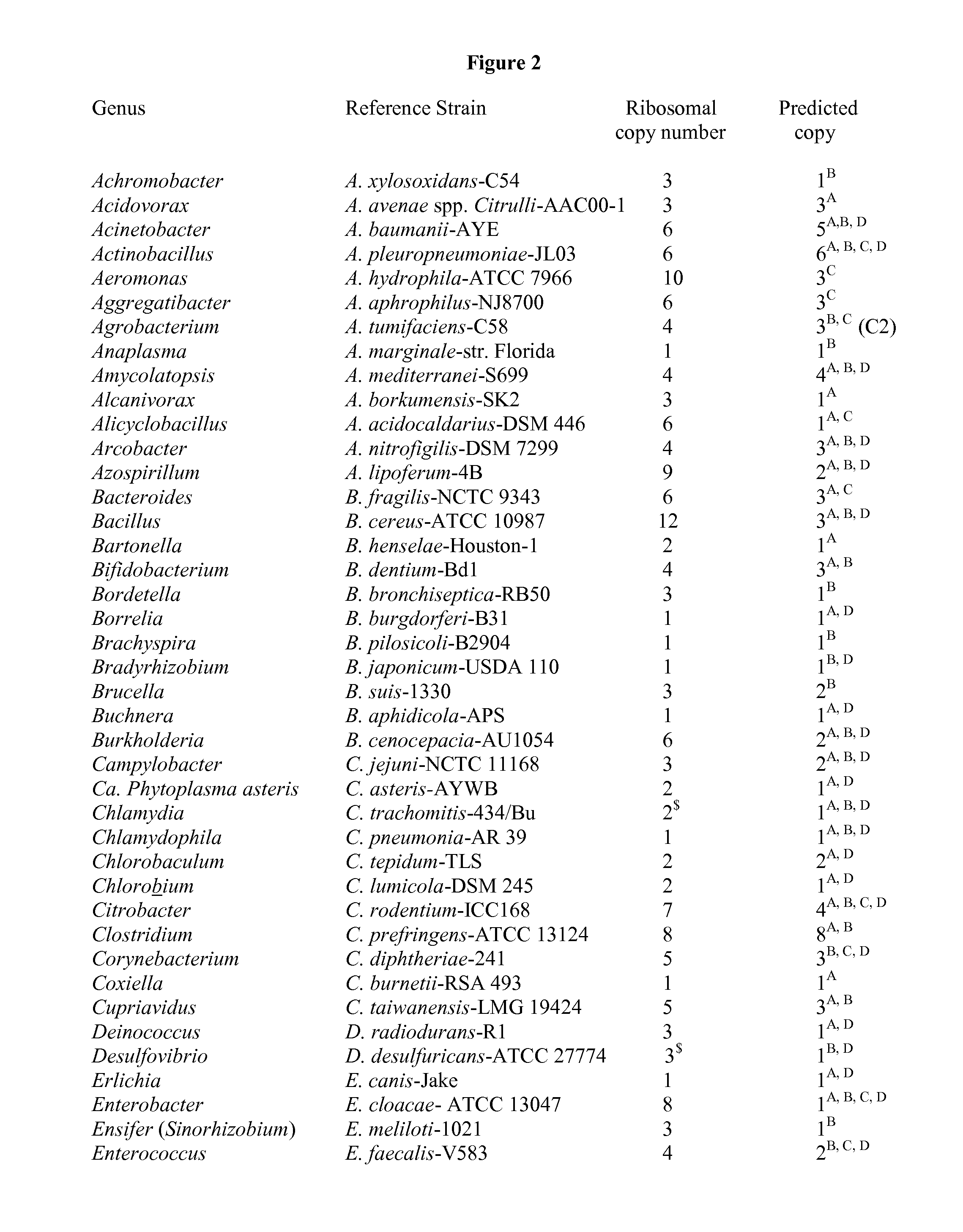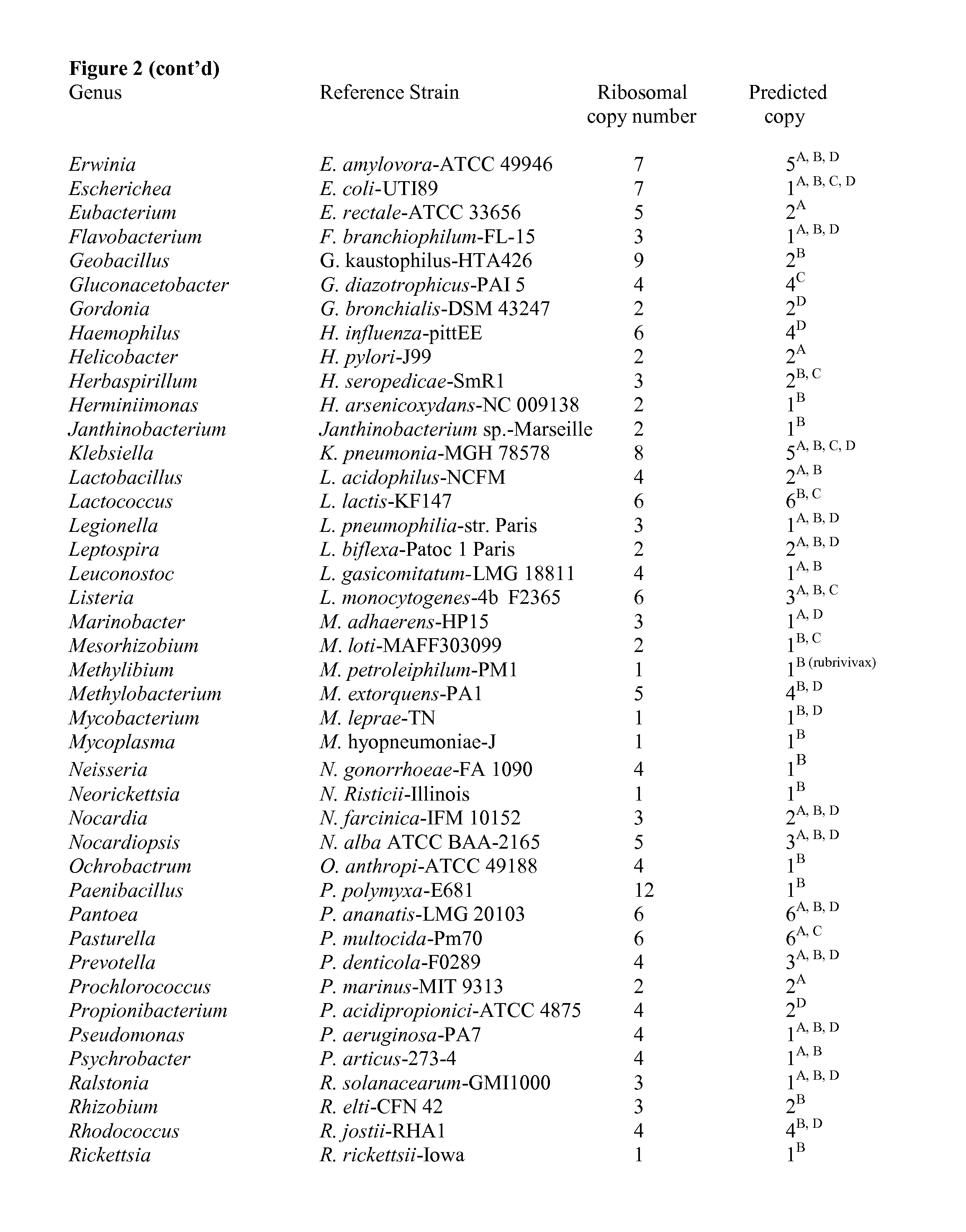Method for Bacterial Species Identification and Strain Typing
a technology of bacterial species and typing method, which is applied in the field of bacterial species identification and strain typing, can solve the problems of inability to identify strains, and difficulty in pfge technology, and achieves the effects of convenient and fast identification, convenient portability, and high degree of automation
- Summary
- Abstract
- Description
- Claims
- Application Information
AI Technical Summary
Benefits of technology
Problems solved by technology
Method used
Image
Examples
example 1
[0105]Bacterial species often have multiple, non-identical ribosomal operons scattered throughout their genomes. The sequence variation in this operon includes variation in the 16S rRNA gene, despite its widespread use in phylogenetic analyses. For example, three to six variants of the 16S rRNA gene can be found among the 5-6 copies of the ribosomal operon found in Burkholderia species. Similarly, the promoters of the multiple ribosomal operons within the genome exhibit sequence variation. Consequently, the use of the ribosomal promoter for phylogenetic analysis will provide varying results depending on which copy is selected.
[0106]Genomes. Annotated genome sequences of several Burkholderia and Pseudomonas strains in the NCBI genome database (managed by the National Center for Biotechnology Information, U.S. National Library of Medicine) were used. The Burkholderia strains included Burkholderia ambifaria AMMD, Burkholderia mallei ATCC 23344, Burkholderia pseudomallei K96243, Burkhol...
PUM
| Property | Measurement | Unit |
|---|---|---|
| Electrical conductance | aaaaa | aaaaa |
| Electrical conductance | aaaaa | aaaaa |
| Electrical conductance | aaaaa | aaaaa |
Abstract
Description
Claims
Application Information
 Login to View More
Login to View More - R&D
- Intellectual Property
- Life Sciences
- Materials
- Tech Scout
- Unparalleled Data Quality
- Higher Quality Content
- 60% Fewer Hallucinations
Browse by: Latest US Patents, China's latest patents, Technical Efficacy Thesaurus, Application Domain, Technology Topic, Popular Technical Reports.
© 2025 PatSnap. All rights reserved.Legal|Privacy policy|Modern Slavery Act Transparency Statement|Sitemap|About US| Contact US: help@patsnap.com



